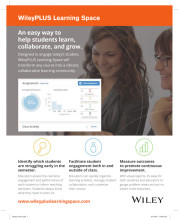Summary: Psychology Semester 2
- This + 400k other summaries
- A unique study and practice tool
- Never study anything twice again
- Get the grades you hope for
- 100% sure, 100% understanding
Read the summary and the most important questions on Psychology Semester 2
-
1 Social Psychology
This is a preview. There are 27 more flashcards available for chapter 1
Show more cards here -
When are attitudes likely to affect behaviour?
When external influences are minimal and when attitude is stable -
What is central route?
Persuasion that uses evidence and arguments that triggers careful thinking -
What is peripheral route?
Use attention grabbing techniques to try and make you make an emotional judgement really quickly -
What are the two types of theories to show that actions can affect our attitudes?
Foot-in-the-door phenomenon and role playing -
What is role playing theory?
If we put people in certain roles and we get them to live that role for a certain period of time, that will affect their attitude eventually b/c there are certain behaviours attached to roles -
What did Festinger propose?
People experience discomfort when they hold conflicting beliefs OR when actions contradict beliefs. They will try to reduce the dissonance to relieve the discomfort (anxious, guilty, ashamed). -
What is the drive to resolve dissonance called?
Principle of cognitive consistency -
What did Asch's experiment show?
People have a naturalneed to be part of agroup , so they will conform to the norms of groups so they will beaccepted and notrejected -
What is normative social influence?
Conform because of our desire to gain approval or avoid disapproval. The price we pay for being different may be severe (ridicules, left out etc.) - we need to belong -
What is informational social influence?
The desire to be right – when we conform because we are unsure of the situation or lack knowledge, so we look to others who we believe may have more information than us.
- Higher grades + faster learning
- Never study anything twice
- 100% sure, 100% understanding






























